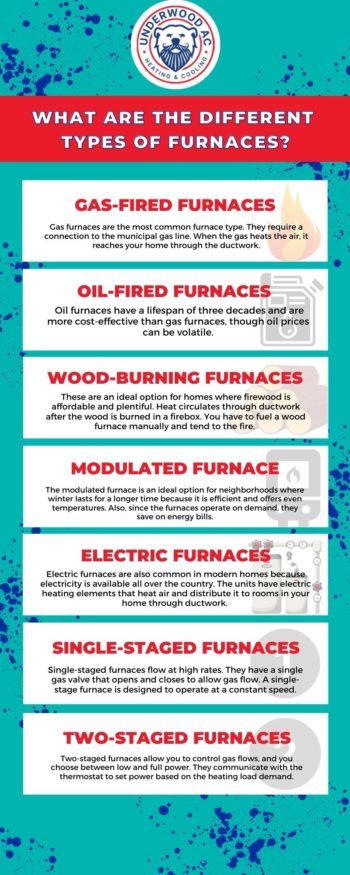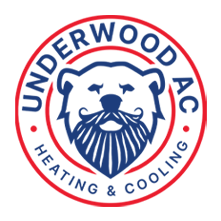Furnaces are among the main parts of HVAC systems. The device generates heat to your building through the combustion of a fuel source. The thermal energy that the fuel sources produce heats spaces by blowing heated air through air ducts. You need to know about the different types of furnaces in the market if you are constructing your home in Davenport, FL, or replacing an existing furnace. You may be overwhelmed by the many furnace options, but talking to a professional and understanding your home’s heating needs can be a starting point.
Gas-Fired Furnaces
Gas furnaces are the most common furnace type. They require a connection to the municipal gas line. When the gas heats the air, it reaches your home through the ductwork. Natural gas is cheaper than electricity and oil, making them more cost-effective to operate. Natural gas burns cleaner than other non-renewable energy sources, which makes it a more environmentally friendly option. However, they come with the risk of carbon monoxide leaks if the furnace is not properly maintained. Therefore, it is paramount to install carbon monoxide detectors for safety. Also, gas furnaces usually have a lifespan of slightly over two decades and require less maintenance than oil furnaces.
Oil-Fired Furnaces
You can choose to install an oil-fired furnace in your home or commercial building if you don’t have access to natural gas. You may need to maintain oil furnaces more frequently and extensively than gas furnaces because the heat exchanger surfaces accumulate carbon and soot, which often requires removal to maintain efficiency. Also, the burner’s nozzle and oil filters need periodic replacement to eliminate fuel impurities before vaporization. These types of furnaces are not as energy-efficient as gas-fired furnaces, but they still heat homes effectively. Oil furnaces have a lifespan of three decades and are more cost-effective than gas furnaces, though oil prices can be volatile.
Wood-Burning Furnaces
These are an ideal option for homes where firewood is affordable and plentiful. Heat circulates through ductwork after the wood is burned in a firebox. You have to fuel a wood furnace manually and tend to the fire. Therefore, it can be impractical if you need to heat your home while you are absent for a longer time. People use wood furnaces as a combination unit where gas or oil functions are an alternative heat source.
Modulated Furnace
Modulated furnaces allow you to adjust the amount of heat you want in your home at a particular time. Therefore, they function at maximum heating. While the modulated furnace models vary, they are made to operate at 1% decreases or increases so that the furnace can monitor the amount of heat required. The furnace adjusts heat output based on your home’s temperature. The modulated furnace is an ideal option for neighborhoods where winter lasts for a longer time because it is efficient and offers even temperatures. Also, since the furnaces operate on demand, they save on energy bills.
Electric Furnaces
Electric furnaces are also common in modern homes because electricity is available all over the country. The units have electric heating elements that heat air and distribute it to rooms in your home through ductwork. Electric furnaces are often more affordable to buy and smaller than other furnace types. They are a preferred choice for homes or buildings with limited space for installation. You can connect an electric furnace to a solar setup for energy savings. It is safer than oil and gas furnaces because there are no risks of gas leaks.
Single-Staged Furnaces
Single-staged furnaces flow at high rates. They have a single gas valve that opens and closes to allow gas flow. A single-stage furnace is designed to operate at a constant speed. The furnaces are an excellent choice for relatively moderate and mild areas because they operate at 80% fuel utilization efficiency, which can comfortably warm your home. Single-stage furnaces are less costly to install and durable, with minimal repairs.
Two-Staged Furnaces
Two-staged furnaces allow you to control gas flows, and you choose between low and full power. They communicate with the thermostat to set power based on the heating load demand. When the temperatures are cold, the furnace automatically opens the valve to turn the system to full capacity. These furnaces have extended the heating cycle, improving the heat distribution in your home to make it comfortable.
Turn to our experts for help when you want to replace or install a furnace. We have a well-versed team dealing with major heating and cooling brands and can assist you in making an informed decision. You can also rely on our experts for energy surveys, ductless mini-split installations, indoor air quality inspections, and electric pool heater service. Call Underwood AC LLC today for more information on furnaces.

